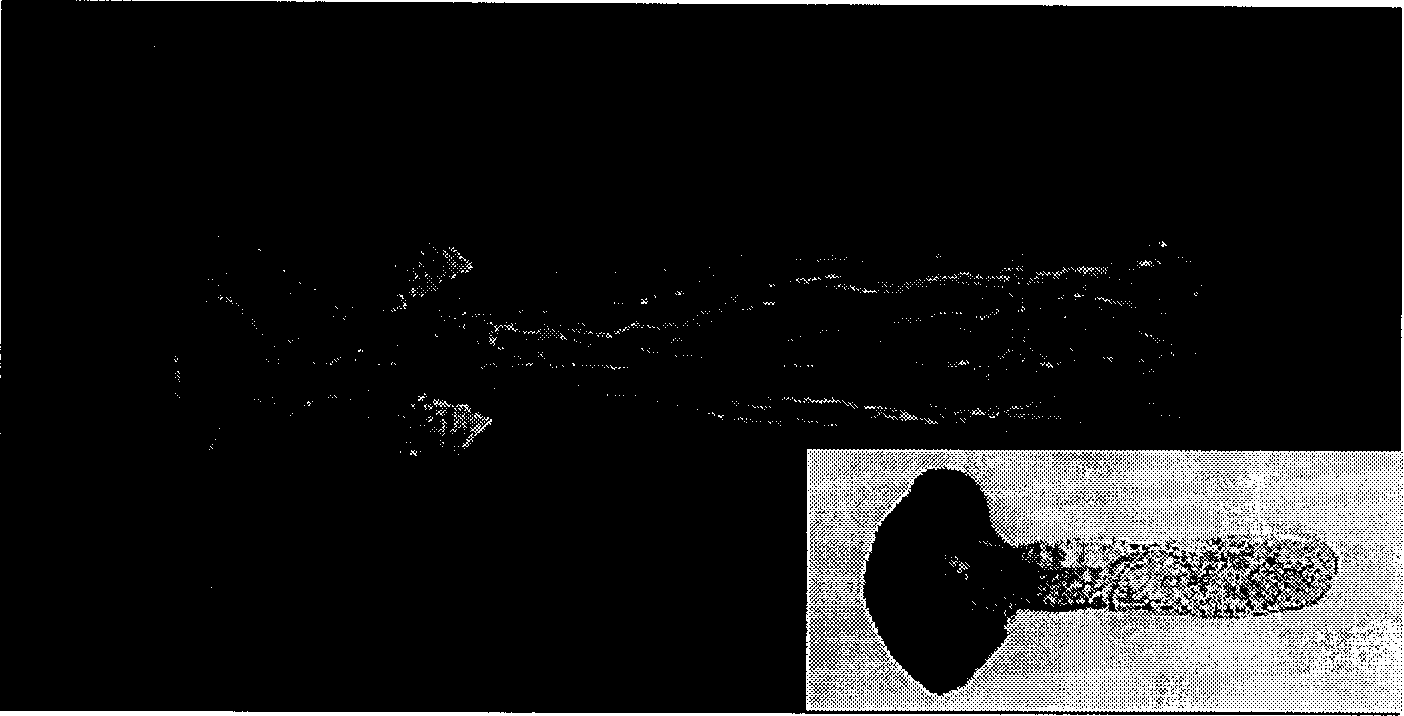Gumnosperm pollen tube microfilament framework fluorescent marking method and its uses
A fluorescent labeling, gymnosperm technology, applied in plant cells and other directions, can solve problems such as the lag of biological research, and achieve the effects of good labeling effect, high application value and simple operation.
- Summary
- Abstract
- Description
- Claims
- Application Information
AI Technical Summary
Problems solved by technology
Method used
Image
Examples
Embodiment 1
[0025] Example 1. Fluorescent labeling of the microfilament skeleton of white rod pollen tubes and its microscopic observation
[0026] Firstly, the method of the present invention is used to carry out fluorescent labeling to the microfilament skeleton of the white pole pollen tube, comprising the following steps:
[0027] 1) Collect the white stem pollen tube samples to be marked, and prepare them in freshly prepared 50mM Pipes buffer (50mM PIPES, 0.5mM MgCl) containing 3% paraformaldehyde 2 , 1mM EGTA, pH 6.9) and quickly pumped and fixed for 30min;
[0028] 2) Wash 3 times with 50mM Pipes buffer to remove residual paraformaldehyde;
[0029] 3) Put the pollen tubes in 0.25% glycerol and infiltrate at room temperature for 40 minutes;
[0030] 4) wash 3 times with 50mM Pipes buffer;
[0031] 5) Incubate the pollen tube with 200 nM TRITC-phalloidin (Sigma, USA) in the dark at room temperature for 1 h. Then, drop into 50% glycerol containing 0.2% Propyl gallate (Sigma Compan...
Embodiment 2
[0032] Example 2. Fluorescence labeling and microscope observation of the microfilament skeleton of Pine pine pollen tube
[0033] Firstly, the method of the present invention carries out fluorescent labeling to the pine pollen tube microfilament skeleton, comprising the following steps:
[0034] 1) Collect the white bark pine pollen tube samples to be marked, and prepare them in freshly prepared 60mM Pipes buffer (60mM PIPES, 0.5mM MgCl) containing 4% paraformaldehyde 2 , 1mM EGTA, pH 6.9) in fast pumping and fixation for 50min;
[0035] 2) Washing 4 times with 60mM Pipes buffer to remove residual paraformaldehyde;
[0036] 3) Put the pollen tubes in 0.2% glycerin and infiltrate at room temperature for 60 minutes;
[0037] 4) wash 4 times with 60mM Pipes buffer;
[0038] 5) Incubate the pollen tubes with 250 nM TRITC-phalloidin in the dark at room temperature for 1.5 h. Then, drop in 60% glycerin containing 0.2% Propyl gallate to the fluorescently labeled pollen tube samp...
PUM
 Login to View More
Login to View More Abstract
Description
Claims
Application Information
 Login to View More
Login to View More - R&D
- Intellectual Property
- Life Sciences
- Materials
- Tech Scout
- Unparalleled Data Quality
- Higher Quality Content
- 60% Fewer Hallucinations
Browse by: Latest US Patents, China's latest patents, Technical Efficacy Thesaurus, Application Domain, Technology Topic, Popular Technical Reports.
© 2025 PatSnap. All rights reserved.Legal|Privacy policy|Modern Slavery Act Transparency Statement|Sitemap|About US| Contact US: help@patsnap.com


